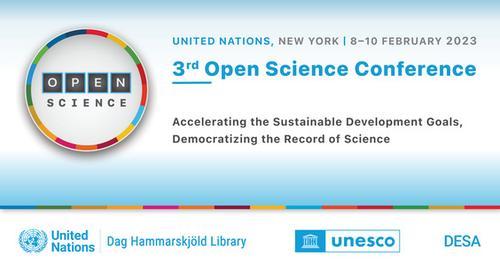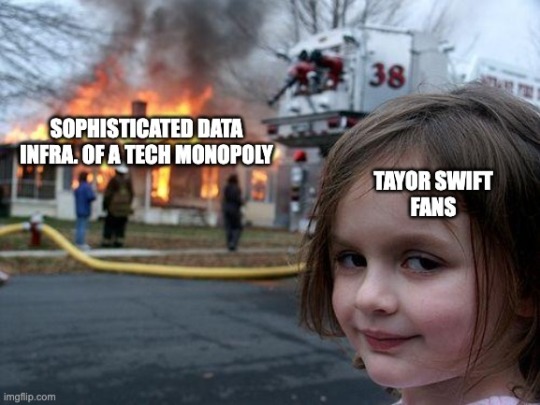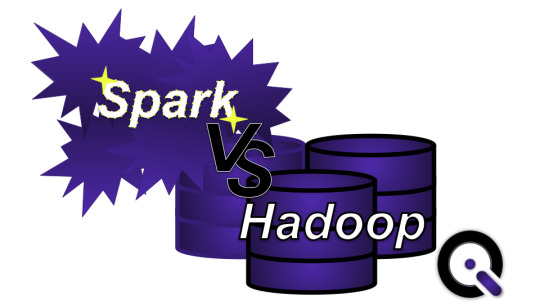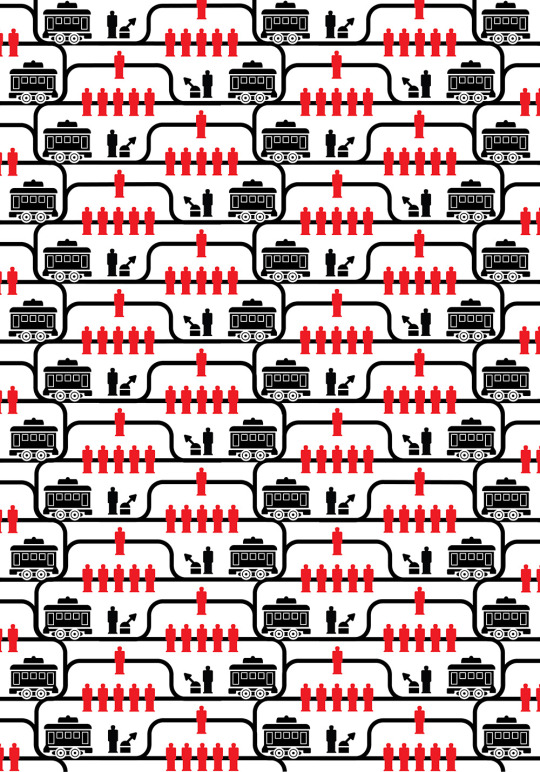#data infrastructure
Text
Demystifying Data Engineering: The Backbone of Modern Analytics
Hey friends! Check out this in-depth blog on #DataEngineering that explores its role in building robust data pipelines, ensuring data quality, and optimizing performance. Discover emerging trends like #cloudcomputing, #realtimeprocessing, and #DataOps
In the era of big data, data engineering has emerged as a critical discipline that underpins the success of data-driven organizations. Data engineering encompasses the design, construction, and maintenance of the infrastructure and systems required to extract, transform, and load (ETL) data, making it accessible and usable for analytics and decision-making. This blog aims to provide an in-depth…

View On WordPress
#artificial intelligence#big data#Cloud Computing#data analytics#data architecture#data catalog#data democratization#data engineering#data engineering best practices#data governance#data infrastructure#data ingestion#data integration#data lifecycle#data migration#data modeling#data pipelines#data privacy#data processing#data quality#data science#data security#data storage#data streaming#data transformation#data warehouse#DataOps#Distributed Computing#ETL#machine learning
2 notes
·
View notes
Text
Unleashing The Power Of Data

Riding the Data Tsunami: How Hyperscale Unleashes Business Potential
The data analytics world is experiencing a seismic shift, evolving from the simplicity of spreadsheets to the depth of AI-driven insights. This journey has fundamentally transformed how businesses leverage data to drive decision-making, enhance customer experiences, and streamline operations. At the forefront of this revolution are hyperscale data analytics, empowering organizations to navigate and decipher vast seas of data like never before, unlocking boundless potential in the digital age.
Data Analytics Overtime: Evolution and Impact
The evolution of modern data analytics is a tale of innovation and growth. Initially reliant on manual spreadsheets, businesses faced the challenges of inefficiency and error-prone processes. However, advancements in technology have ushered in a new era. Relational databases streamlined data storage and retrieval, while business intelligence (BI) tools enabled sophisticated visualization and reporting.
The integration of artificial intelligence (AI) and machine learning (ML) propelled analytics into new realms, offering predictive insights and automating complex tasks. This evolution underscores the importance of hyperscale solutions in managing the vast data landscapes of contemporary businesses.
Understanding Hyperscale Data Analytics
Hyperscale analytics is intertwined with data centers designed to manage and process enormous quantities of data. These centers serve as the foundation for handling, storing, and analyzing data at an unprecedented scale, supporting the needs of big data and analytics applications. The essence of hyperscale analytics lies in its ability to accommodate exponential data growth, ensuring infrastructure can scale seamlessly.
This capability is critical for organizations reliant on real-time analysis to inform decision-making, optimize operations, and innovate. Hyperscale computing optimizes efficiency, enabling quick adaptation without physical upgrades, thus enhancing performance for big data projects. Despite potential drawbacks such as unpredictable costs, businesses view hyperscale solutions as strategic investments for operational efficiency and innovation support.
Why Hyperscale is Necessary?
In various sectors, the surge in data volume demands hyperscale solutions for efficient management and analysis. Traditional systems struggle with scalability, speed, and resource efficiency under the weight of big data. Hyperscale architecture, however, dynamically scales with data, supporting rapid expansion without conventional limitations. This necessity arises from the imperative to swiftly harness insights from large datasets, ensuring organizations remain competitive and agile.
Organizations encounter challenges when managing large datasets, including data storage and integration issues, ensuring data quality and security, and handling the complexity of analysis. The sheer volume of data overwhelms traditional tools, hindering meaningful insights extraction. Additionally, real-time analysis demands advanced computational power and sophisticated tools. Ensuring data privacy and compliance further complicates matters. These challenges emphasize the need for robust, scalable solutions to leverage big data efficiently for informed decision-making.
Limitations of traditional data management solutions in handling big data
Traditional data management solutions face limitations with big data due to scalability issues, difficulty processing and analyzing data in real-time, and inefficiency in handling the variety and velocity of big data. They need help integrating diverse data types and sources seamlessly and need help with performance and reliability as data volume grows. These systems may also not provide the analytical tools and computational power required to extract valuable insights from large datasets, leading to challenges in decision-making and operational efficiency.
Industry Applications of Hyperscale Data Analytics
Various sectors leverage hyperscale analytics for enhanced decision-making and operational efficiency. AdTech utilizes big data for targeted advertising, while financial services employ it for risk analysis. Telecommunications optimize networks, and geospatial industries monitor trends and disasters in real time. These applications illustrate how hyperscale analytics supports sectors in handling large-scale data challenges efficiently.
Challenges and Considerations
Implementing hyperscale solutions can present challenges such as significant initial costs and operational complexity. However, careful planning and investment can ensure successful implementation and maximization of benefits. Businesses must evaluate scalability needs, assess technical readiness, and invest in personnel or training. Long-term cost-benefit analysis is crucial to align investments with strategic goals.
Concluding Thoughts
In a data-driven world, hyperscale data analytics solutions are indispensable for navigating vast data landscapes. These solutions empower organizations to efficiently manage and analyze large datasets, driving innovation and sustained growth. As we embrace the possibilities, let's remember the transformative role of hyperscale analytics in turning data into strategic assets. We encourage organizations to explore the potential with Coditude, a product engineering company paving the way for innovation and competitive advantage.
#data analytics#hyperscale revolution#big data#hyper scale solutions#coditude#digital age#data management#data infrastructure#scalability
0 notes
Text
#big data#technology#ai#data science#writeblr#writers on tumblr#tech#computer#computing#free ebooks#kindle ebooks#bookblr#books and reading#information technology#management#infrastructure#data infrastructure#big data analytics#real time#ebooks#kindle#writing#writerscommunity#ebookdeals
1 note
·
View note
Text
Home - Mobius Risk Group

Successfully navigate and excel in global commodity markets through Mobius Risk Group’s award-winning technology and unmatched market experience.
1 note
·
View note
Text
What is the difference between Data Scientist and Data Engineers ?
In today’s data-driven world, organizations harness the power of data to gain valuable insights, make informed decisions, and drive innovation. Two key players in this data-centric landscape are data scientists and data engineers. Although their roles are closely related, each possesses unique skills and responsibilities that contribute to the successful extraction and utilization of data. In…
View On WordPress
#Big Data#Business Intelligence#Data Analytics#Data Architecture#Data Compliance#Data Engineering#Data Infrastructure#Data Insights#Data Integration#Data Mining#Data Pipelines#Data Science#data security#Data Visualization#Data Warehousing#Data-driven Decision Making#Exploratory Data Analysis (EDA)#Machine Learning#Predictive Analytics
1 note
·
View note
Photo

Nvidia has announced the availability of DGX Cloud on Oracle Cloud Infrastructure. DGX Cloud is a fast, easy and secure way to deploy deep learning and AI applications. It is the first fully integrated, end-to-end AI platform that provides everything you need to train and deploy your applications.
#AI#Automation#Data Infrastructure#Enterprise Analytics#ML and Deep Learning#AutoML#Big Data and Analytics#Business Intelligence#Business Process Automation#category-/Business & Industrial#category-/Computers & Electronics#category-/Computers & Electronics/Computer Hardware#category-/Computers & Electronics/Consumer Electronics#category-/Computers & Electronics/Enterprise Technology#category-/Computers & Electronics/Software#category-/News#category-/Science/Computer Science#category-/Science/Engineering & Technology#Conversational AI#Data Labelling#Data Management#Data Networks#Data Science#Data Storage and Cloud#Development Automation#DGX Cloud#Disaster Recovery and Business Continuity#enterprise LLMs#Generative AI
0 notes
Text
Harnessing the Power of Big Data: How to Use AI to Make Data-Driven Decisions
Unleash the potential of artificial intelligence in your business by leveraging big data for smarter, more informed decision-making.
In the era of digital transformation, businesses are inundated with data. Every day, companies generate and collect massive amounts of information from various sources, including customer interactions, social media, sales transactions, and more. To stay ahead in…

View On WordPress
#AI in Business#Artificial Intelligence#Big Data#Business Intelligence#Data Analysis#Data Infrastructure#Data-Driven Decisions#Deep Learning#Machine learning#Natural Language Processing
0 notes
Text
#BI solutions#BI systems#BI tools#Business Intelligence#Business Intelligence plan#Business intelligence solutions#business intelligence tools#data infrastructure#Decision-making solutions#decision-making tools#Microsoft Power BI#Microsoft Power BI platforms
0 notes
Photo

These days, no matter the size of your organization, you will spend a great deal of time working with documents. Whether you are the boss of a tiny startup, running a medium-sized company, or even behind a massive conglomerate, you cannot escape paperwork. However, this does not need to cause you undue stress. Document automation
software
can help
0 notes
Text
Accelerating the Sustainable Development Goals, Democratizing the Record of Science.

From 8 to 10 February 2023, the 3rd United Nations Open Science Conference, "Accelerating the Sustainable Development Goals, Democratizing the Record of Science", will bring together policy makers, IGO representatives, researchers, scholars, librarians, publishers and civil society. They will convene at the UN Headquarters in New York and online to illustrate open science in action and to engage into a dialogue about the opportunities and challenges of practicing open science. Building on the outcomes of our previous United Nations Open Science Conference, this 3rd global endeavor will explore initiatives, themes and perspectives into the open scientific method and the digital scholarly communications cycle. It will evolve around three livestreams which will cut across all panels and keynotes:
Equity in open scholarship
Reforming scientific publishing
Strengthening the science-policy-society interface.
#Open Science#Open Data#Data infrastructure#3rd Open Science Conference#UNESCO#UNDESA#dag hammarskjold#scientists#Science Publishing#Record of Science#Conferences
0 notes
Photo

I guess key-value stores still fail to scale to 100s of millions of concurrent transactions. Online ticketing tech monopoly 0 vs. Taylor Swift fans 1. XD
https://www.ciodive.com/news/Taylor-Swift-Ticketmaster-outage/636641/
0 notes
Text
9 Benefits of Cloud Computing for Your Business
Data security, storage, 0% downtime, managing CRM, resource optimization, use of latest software, anytime & anywhere resource availability model are some of the greatest advantages of cloud technology. Cloud technology reduces a high amount of investment and saves a lot of time.
For SMEs, the most important things to be considered are optimized productivity and cost savings, while implementing any business solutions. But, a survey proves, technology might be difficult for SMEs to manage or they are lacking expertise. Let’s discuss the benefits of cloud computing and how it can be implemented to achieve business objectives.
1. Cloud Storage
Cloud storage is one of the top benefits of cloud computing services. Many of us use cloud technology in our personal lives, but similarly, it can be used to transform businesses. Have you ever used Dropbox, Microsoft’s OneDrive, Apple’s iCloud, or Google Docs? These all are cloud data storage platforms. Now let’s check how cloud storage is helping businesses.
#Cloud security#cloud security#cloud identity#cloud cost optimization#cloud monitor#data infrastructure#cloudcomputing
0 notes
Text
In some of the work you’ve done on data centers, you talk about how AI is presented as a climate solution, even as it requires resource-intensive data centers and computing to power it. What do you think is the risk of presenting resource-intensive AI as a solution to climate change?
This is something that’s already happening, which is basically the imposition of ecological visions of a few, especially in the Global North with private interests, onto the rest of the world. We can see this operating not only when it comes to data centers, but also lithium extraction. Lithium is used for rechargeable batteries, which is a key component of so-called transition technologies, such as electric vehicles.
If we want to design a transition towards new forms of energy or less carbon-intensive energies, we need to cooperate with these communities and a very important actor are the ones that are participating in the AI value chain. Companies have a big interest in hiding this value chain, in making sure that these communities don’t have a voice in the media, in regulatory discussions, and so on, because this is crucial for their business model and for the technical capacities that they need. There is a big interest in silencing them. This is why they don’t provide information about what they do.
It’s also very important that as we discuss AI governance or regulation, we ask how we can incorporate these communities. If you look at what’s happening in Europe, there is upcoming regulation that is going to request that companies provide some transparency when it comes to energy use. But what about something more radical? What about incorporating these communities in the very governance of data centers? Or if we really want more just technologies for environmental transition, why not have a collective discussion, incorporating actors from different contexts and regions of the world to discuss what will be the most efficient — if you want to use that word — way of allocating data centers.
In the case of indigenous communities in the Atacama Desert, water is sacred. They have a special relationship with water. One of the few words that they still have is uma, which stands for water. So how do we make sure that these companies respect the way these communities relate to the environment? It’s impossible to think of any kind of transition without considering and respecting the ecological visions of these groups. I don’t really believe in any technologically intensive form of transition that’s made by technocrats in the Global North and that ignores the effects that these infrastructures are having in the rest of the world and the visions of these communities.
62 notes
·
View notes
Text
Apache: Hadoop and Spark
With the rapid evolution of the Hadoop ecosystem, Apache has added Spark as a recent addition to the ecosystem. Both help with the traditional challenges of storing and processing large data sets. However, whereas Hadoop exists for data management, the primary purpose of Spark is data processing. Then, even though both are open-source big data tools, they have some key distinctions. Therefore,…

View On WordPress
#apache#big data#big data analytics#big-data#big-data-analytics#bigdata#bigdataanalytics#data infrastructure#data-infrastructure#hadoop#HDFS#spark
0 notes
Text
Linkty Dumpty

I was supposed to be on vacation, and while I didn’t do any blogging for a month, that didn’t mean that I stopped looking at my distraction rectangle and making a list of things I wanted to write about. Consequentially, the link backlog is massive, so it’s time to declare bankruptcy with another linkdump:
https://pluralistic.net/tag/linkdump/

[Image ID: John Holbo’s ‘trolley problem’ art, a repeating pattern of trolleys, tracks, people on tracks, and people standing at track switches]++
Let’s kick things off with a little graphic whimsy. You’ve doubtless seen the endless Trolley Problem memes, working from the same crude line drawings? Well, philosopher John Holbo got tired of that artwork, and he whomped up a fantastic alternative, which you can get as a poster, duvet, sticker, tee, etc:
https://www.redbubble.com/shop/ap/145078097
The trolley problem has been with us since 1967, but it’s enjoying a renaissance thanks to the insistence of “AI” weirdos that it is very relevant to our AI debate. A few years back, you could impress uninformed people by dropping the Trolley Problem into a discussion:
https://memex.craphound.com/2016/10/25/mercedes-weird-trolley-problem-announcement-continues-dumb-debate-about-self-driving-cars/
Amazingly, the “AI” debate has only gotten more tedious since the middle of the past decade. But every now and again, someone gets a stochastic parrot to do something genuinely delightful, like the Jolly Roger Telephone Company, who sell chatbots that will pretend to be tantalyzingly confused marks in order to tie up telemarketers and waste their time:
https://jollyrogertelephone.com/
Jolly Roger sells different personas: “Whitebeard” is a confused senior who keeps asking the caller’s name, drops nonsequiturs into the conversation, and can’t remember how many credit-cards he has. “Salty Sally” is a single mom with a houseful of screaming, demanding children who keep distracting her every time the con artist is on the verge of getting her to give up compromising data. “Whiskey Jack” is drunk:
https://www.wsj.com/articles/people-hire-phone-bots-to-torture-telemarketers-2dbb8457
The bots take a couple minutes to get the sense of the conversation going. During that initial lag, they have a bunch of stock responses like “there’s a bee on my arm, but keep going,” or grunts like “huh,” and “uh-huh.” The bots can keep telemarketers and scammers on the line for quite a long time. Scambaiting is an old and honorable vocation, and it’s good that it has received a massive productivity gain from automation. This is the AI Dividend I dream of.
The less-fun AI debate is the one over artists’ rights and tech. I am foresquare for the artists here, but I think that the preferred solutions (like creating a new copyright over the right to train a model with your work) will not lead to the hoped-for outcome. As with other copyright expansions — 40 years’ worth of them now — this right will be immediately transferred to the highly concentrated media sector, who will simply amend their standard, non-negotiable contracting terms to require that “training rights” be irrevocably assigned to them as a condition of working.
The real solution isn’t to treat artists as atomic individuals — LLCs with an MFA — who bargain, business-to-business, with corporations. Rather, the solutions are in collective power, like unions. You’ve probably heard about the SAG-AFTRA actors’ strike, in which creative workers are bargaining as a group to demand fair treatment in an age of generative models. SAG-AFTRA president Fran Drescher’s speech announcing the strike made me want to stand up and salute:
https://www.youtube.com/watch?v=J4SAPOX7R5M
The actors’ strike is historic: it marks the first time actors have struck since 2000, and it’s the first time actors and writers have co-struck since 1960. Of course, writers in the Writers Guild of America (West and East) have been picketing since since April, and one of their best spokespeople has been Adam Conover, a WGA board member who serves on the negotiating committee. Conover is best known for his stellar Adam Ruins Everything comedy-explainer TV show, which pioneered a technique for breaking down complex forms of corporate fuckery and making you laugh while he does it. Small wonder that he’s been so effective at conveying the strike issues while he pickets.
Writing for Jacobin, Alex N Press profiles Conover and interviews him about the strike, under the excellent headline, “Adam Pickets Everything.” Conover is characteristically funny, smart, and incisive — do read:
https://jacobin.com/2023/07/adam-conover-wga-strike
Of course, not everyone in Hollywood is striking. In late June, the DGA accepted a studio deal with an anemic 41% vote turnout:
https://www.theverge.com/2023/6/26/23773926/dga-amptp-new-deal-strike
They probably shouldn’t have. In this interview with The American Prospect’s Peter Hong, the brilliant documentary director Amy Ziering breaks down how Netflix and the other streamers have rugged documentarians in a classic enshittification ploy that lured in filmmakers, extracted everything they had, and then discarded the husks:
https://prospect.org/culture/2023-06-21-drowned-in-the-stream/
Now, the streaming cartel stands poised to all but kill off documentary filmmaking. Pressured by Wall Street to drive high returns, they’ve become ultraconservative in their editorial decisions, making programs and films that are as similar as possible to existing successes, that are unchallenging, and that are cheap. We’ve gone directly from a golden age of docs to a dark age.
In a time of monopolies, it’s tempting to form countermonopolies to keep them in check. Yesterday, I wrote about why the FTC and Lina Khan were right to try to block the Microsoft/Activision merger, and I heard from a lot of people saying this merger was the only way to check Sony’s reign of terror over video games:
https://pluralistic.net/2023/07/14/making-good-trouble/#the-peoples-champion
But replacing one monopolist with another isn’t good for anyone (except the monopolists’ shareholders). If we want audiences and workers — and society — to benefit, we have to de-monopolize the sector. Last month, I published a series with EFF about how we should save the news from Big Tech:
https://www.eff.org/deeplinks/2023/04/saving-news-big-tech
After that came out, the EU Observer asked me to write up version of it with direct reference to the EU, where there are a lot of (in my opinion, ill-conceived but well-intentioned) efforts to pry Big Tech’s boot off the news media’s face. I’m really happy with how it came out, and the header graphic is awesome:
https://euobserver.com/opinion/157187
De-monopolizing tech has become my life’s work, both because tech is foundational (tech is how we organize to fight over labor, gender and race equality, and climate justice), and because tech has all of these technical aspects, which open up new avenues for shrinking Big Tech, without waiting decades for traditional antitrust breakups to run their course (we need these too, though!).
I’ve written a book laying out a shovel-ready plan to give tech back to its users through interoperability, explaining how to make new regulations (and reform old ones), what they should say, how to enforce them, and how to detect and stop cheating. It’s called “The Internet Con: How To Seize the Means of Computation” and it’s coming from Verso Books this September:
https://www.versobooks.com/products/3035-the-internet-con

[Image ID: The cover of the Verso Books hardcover of ‘The Internet Con: How to Seize the Means of Computation]
I just got my first copy in the mail yesterday, and it’s a gorgeous little package. The timing was great, because I spent the whole week in the studio at Skyboat Media recording the audiobook — the first audiobook of mine that I’ve narrated. It was a fantastic experience, and I’ll be launching a Kickstarter to presell the DRM-free audio and ebooks as well as hardcovers, in a couple weeks.
Though I like doing these crowdfunders, I do them because I have to. Amazon’s Audible division, the monopolist that controls >90% of the audiobook market, refuses to carry my work because it is DRM-free. When you buy a DRM-free audiobook, that means that you can play it on anyone’s app, not just Amazon’s. Every audiobook you’ve ever bought from Audible will disappear the moment you decide to break up with Amazon, which means that Amazon can absolutely screw authors and audiobook publishers because they’ve taken our customers hostage.
If you are unwise enough to pursue an MBA, you will learn a term of art for this kind of market structure: it’s a “moat,” that is, an element of the market that makes it hard for new firms to enter the market and compete with you. Warren Buffett pioneered the use of this term, and now it’s all but mandatory for anyone launching a business or new product to explain where their moat will come from.
As Dan Davies writes, these “moats” aren’t really moats in the Buffett sense. With Coke and Disney, he says, a “moat” was “the fact that nobody else could make such a great product that everyone wanted.” In other words, “making a good product,” is a great moat:
https://backofmind.substack.com/p/stuck-in-the-moat
But making a good product is a lot of work and not everyone is capable of it. Instead, “moat” now just means some form of lock in. Davies counsels us to replace “moat” with:
our subscription system and proprietary interface mean that our return on capital is protected by a strong Berlin Wall, preventing our customers from getting out to a freer society and forcing them to consume our inferior products for lack of alternative.
I really like this. It pairs well with my 2020 observation that the fight over whether “IP” is a meaningful term can be settled by recognizing that IP has a precise meaning in business: “Any policy that lets me reach beyond the walls of my firm to control the conduct of my competitors, critics and customers”:
https://locusmag.com/2020/09/cory-doctorow-ip/
To see how that works in the real world, check out “The Anti-Ownership Ebook Economy,” a magisterial piece of scholarship from Sarah Lamdan, Jason M. Schultz, Michael Weinberg and Claire Woodcock:
https://www.nyuengelberg.org/outputs/the-anti-ownership-ebook-economy/
Something happened when we shifted to digital formats that created a loss of rights for readers. Pulling back the curtain on the evolution of ebooks offers some clarity to how the shift to digital left ownership behind in the analog world.
The research methodology combines both anonymous and named sources in publishing, bookselling and librarianship, as well as expert legal and economic analysis. This is an eminently readable, extremely smart, and really useful contribution to the scholarship on how “IP” (in the modern sense) has transformed books from something you own to something that you can never own.
The truth is, capitalists hate capitalism. Inevitably, the kind of person who presides over a giant corporation and wields power over millions of lives — workers, suppliers and customers — believes themselves to be uniquely and supremely qualified to be a wise dictator. For this kind of person, competition is “wasteful” and distracts them from the important business of making everyone’s life better by handing down unilateral — but wise and clever — edits. Think of Peter Thiel’s maxim, “competition is for losers.”
That’s why giant companies love to merge with each other, and buy out nascent competitors. By rolling up the power to decide how you and I and everyone else live our lives, these executives ensure that they can help us little people live the best lives possible. The traditional role of antitrust enforcement is to prevent this from happening, countering the delusions of would-be life-tenured autocrats of trade with public accountability and enforcement:
https://marker.medium.com/we-should-not-endure-a-king-dfef34628153
Of course, for 40 years, we’ve had neoliberal, Reaganomics-poisoned antitrust, where monopolies are celebrated as “efficient” and their leaders exalted as geniuses whose commercial empires are evidence of merit, not savagery. That era is, thankfully, coming to an end, and not a moment too soon.
Leading the fight is the aforementioned FTC chair Lina Khan, who is taking huge swings at even bigger mergers. But the EU is no slouch in this department: they’re challenging the Adobe/Figma merger, a $20b transaction that is obviously and solely designed to recapture customers who left Adobe because they didn’t want to struggle under its yoke any longer:
https://gizmodo.com/adobe-figma-acquisition-likely-to-face-eu-investigation-1850555562
For autocrats of trade, this is an intolerable act of disloyalty. We owe them our fealty and subservience, because they are self-evidently better at understanding what we need than we could ever be. This unwarranted self-confidence from the ordinary mediocrities who end up running giant tech companies gets them into a whole lot of hot water.
One keen observer of the mind-palaces that tech leaders trap themselves in is Anil Dash, who describes the conspiratorial, far-right turn of the most powerful men (almost all men!) in Silicon Valley in a piece called “‘VC Qanon’ and the radicalization of the tech tycoons”:
https://www.anildash.com/2023/07/07/vc-qanon/
Dash builds on an editorial he published in Feb, “The tech tycoon martyrdom charade,” which explores the sense of victimhood the most powerful, wealthiest people in the Valley project:
https://www.anildash.com/2023/02/27/tycoon-martyrdom-charade/
These dudes are prisoners of their Great Man myth, and leads them badly astray. And while all of us are prone to lapses in judgment and discernment, Dash makes the case that tech leaders are especially prone to it:
Nobody becomes a billionaire by accident. You have to have wanted that level of power, control and wealth more than you wanted anything else in your life. They all sacrifice family, relationships, stability, community, connection, and belonging in service of keeping score on a scale that actually yields no additional real-world benefits on the path from that first $100 million to the tens of billions.
This makes billionaires “a cohort that is, counterintutively, very easily manipulated.” What’s more, they’re all master manipulators, and they all hang out with each other, which means that when a conspiratorial belief takes root in one billionaire’s brain, it spreads to the rest of them like wildfire.
Then, billionaires “push each other further and further into extreme ideas because their entire careers have been predicated on the idea that they’re genius outliers who can see things others can’t, and that their wealth is a reward for that imagined merit.”
They live in privileged bubbles, which insulates them from disconfirming evidence — ironic, given how many of these bros think they are wise senators in the agora.
There are examples of billionaires’ folly all around us today, of course. Take privacy: the idea that we can — we should — we must — spy on everyone, all the time, in every way, to eke out tiny gains in ad performance is objectively batshit. And yet, wealthy people decreed this should be so, and it was, and made them far richer.
Leaked data from Microsoft’s Xandr ad-targeting database reveals how the commercial surveillance delusion led us to a bizarre and terrible place, as reported on by The Markup:
https://themarkup.org/privacy/2023/06/08/from-heavy-purchasers-of-pregnancy-tests-to-the-depression-prone-we-found-650000-ways-advertisers-label-you
The Markup’s report lets you plumb 650,000 targeting categories, searching by keyword or loading random sets, 20 at a time. Do you want to target gambling addicts, people taking depression meds or Jews? Xandr’s got you covered. What could possibly go wrong?
The Xandr files come from German security researcher Wolfie Christl from Cracked Labs. Christi is a European, and he’s working with the German digital rights group Netzpolitik to get the EU to scrutinize all the ways that Xandr is flouting EU privacy laws.
Billionaires’ big ideas lead us astray in more tangible ways, of course. Writing in The Conversation, John Quiggin asks us to take a hard look at the much ballyhooed (and expensively ballyhooed) “nuclear renaissance”:
https://theconversation.com/dutton-wants-australia-to-join-the-nuclear-renaissance-but-this-dream-has-failed-before-209584
Despite the rhetoric, nukes aren’t cheap, and they aren’t coming back. Georgia’s new nuclear power is behind schedule and over budget, but it’s still better off than South Carolina’s nukes, which were so over budget that they were abandoned in 2017. France’s nuke is a decade behind schedule. Finland’s opened this year — 14 years late. The UK’s Hinkley Point C reactor is massively behind schedule and over budget (and when it’s done, it will be owned by the French government!).
China’s nuclear success story also doesn’t hold up to scrutiny — they’ve brought 50GW of nukes online, sure, but they’re building 95–120GW of solar every year.
Solar is the clear winner here, along with other renewables, which are plummeting in cost (while nukes soar) and are accelerating in deployments (while nukes are plagued with ever-worsening delays).
This is the second nuclear renaissance — the last one, 20 years ago, was a bust, and that was before renewables got cheap, reliable and easy to manufacture and deploy. You’ll hear fairy-tales about how the early 2000s bust was caused by political headwinds, but that’s simply untrue: there were almost no anti-nuke marches then, and governments were scrambling to figure out low-carbon alternatives to fossil fuels (this was before the latest round of fossil fuel sabotage).
The current renaissance is also doomed. Yes, new reactors are smaller and safer and won’t have the problems intrinsic to all megaprojects, but designs like VOYGR have virtually no signed deals. Even if they do get built, their capacity will be dwarfed by renewables — a Gen III nuke will generate 710MW of power. Globally, we add that much solar every single day.
And solar power is cheap. Even after US subsidies, a Gen III reactor would charge A$132/MWh — current prices are as low as A$64-$114/MWh.
Nukes are getting a charm offensive because wealthy people are investing in hype as a way of reaping profits — not as a way of generating safe, cheap, reliable energy.
Here in the latest stage of capitalism, value and profit are fully decoupled. Monopolists are shifting more and more value from suppliers and customers to their shareholders every day. And when the customer is the government, the depravity knows no bounds. In Responsible Statecraft, Connor Echols describes how military contractors like Boeing are able to bill the Pentagon $52,000 for a trash can:
https://responsiblestatecraft.org/2023/06/20/the-pentagons-52000-trash-can/
Military Beltway Bandits are nothing new, of course, but they’ve gotten far more virulent since the Obama era, when Obama’s DoD demanded that the primary contractors merge to a bare handful of giant firms, in the name of “efficiency.” As David Dayen writes in his must-read 2020 book Monopolized, this opened the door to a new kind of predator:
https://pluralistic.net/2021/01/29/fractal-bullshit/#dayenu
The Obama defense rollups were quickly followed by another wave of rollups, these ones driven by Private Equity firms who cataloged which subcontractors were “sole suppliers” of components used by the big guys. These companies were all acquired by PE funds, who then lowered the price of their products, selling them below cost.
This maximized the use of those parts in weapons and aircraft sold by primary contractors like Boeing, which created a durable, long-lasting demand for fresh parts for DoD maintenance of its materiel. PE-owned suppliers hits Uncle Sucker with multi-thousand-percent markups for these parts, which have now wormed their way into every corner of the US arsenal.
Yes, this is infuriating as hell, but it’s also so grotesquely wrong that it’s impossible to defend, as we see in this hilarious clip of Rep Katie Porter grilling witnesses on US military waste:
https://www.youtube.com/watch?v=TJhf6l1nB9A
Porter pulls out the best version yet of her infamous white-board and makes her witnesses play defense ripoff Jepoardy!, providing answers to a series of indefensible practices.
It’s sure nice when our government does something for us, isn’t it? We absolutely can have nice things, and we’re about to get them. The Infrastructure Bill contains $42B in subsidies for fiber rollouts across the country, which will be given to states to spend. Ars Technica’s Jon Brodkin breaks down the state-by-state spending:
https://arstechnica.com/tech-policy/2023/06/us-allocates-42b-in-broadband-funding-find-out-how-much-your-state-will-get/
Texas will get $3.31B, California will get $1.86B, and 17 other states will get $1B or more. As the White House announcement put it, “High-speed Internet is no longer a luxury.”
To understand how radical this is, you need to know that for decades, the cable and telco sector has grabbed billions in subsidies for rural and underserved communities, and then either stole the money outright, or wasted it building copper networks that run at a fraction of a percent of fiber speeds.
This is how America — the birthplace of the internet — ended up with some of the world’s slowest, most expensive broadband, even after handing out tens of billions of dollars in subsidies. Those subsidies were gobbled up by greedy, awful phone companies — these ones must be spent wisely, on long-lasting, long-overdue fiber infrastructure.
That’s a good note to end on, but I’ve got an even better one: birds in the Netherlands are tearing apart anti-bird strips and using them to build their nests. Wonderful creatures 1, hostile architecture, 0. Nature is healing:
https://www.theguardian.com/science/2023/jul/11/crows-and-magpies-show-their-metal-by-using-anti-bird-spikes-to-build-nests

If you'd like an essay-formatted version of this thread to read or share, here's a link to it on pluralistic.net, my surveillance-free, ad-free, tracker-free blog:
https://pluralistic.net/2023/07/15/in-the-dumps/#what-vacation

Next Tues, Jul 18, I'm hosting the first Clarion Summer Write-In Series, an hour-long, free drop-in group writing and discussion session. It's in support of the Clarion SF/F writing workshop's fundraiser to offer tuition support to students:
https://mailchi.mp/theclarionfoundation/clarion-write-ins

[Image iD: A dump-truck, dumping out a load of gravel. A caricature of Humpty Dumpty clings to its lip, restrained by a group of straining, Lilliputian men.]
#pluralistic#infrastructure#broadband#linkdumps#fran drescher#labor#strikes#libraries#big tech#sag aftra#writer's strike#commercial surveillance#actor's strike#data brokers#ebooks#moats and walls#drm#licensing#glam#publishing#military privacy#copyfight#platform economics#nukes#adam conover#pentagon#birds#mergers#delightful creatures#hostile architecture
114 notes
·
View notes
Text
[T]he Dutch Republic, like its successor the Kingdom of the Netherlands, [...] throughout the early modern period had an advanced maritime [trading, exports] and (financial) service [banking, insurance] sector. Moreover, Dutch involvement in Atlantic slavery stretched over two and a half centuries. [...] Carefully estimating the scope of all the activities involved in moving, processing and retailing the goods derived from the forced labour performed by the enslaved in the Atlantic world [...] [shows] more clearly in what ways the gains from slavery percolated through the Dutch economy. [...] [This web] connected them [...] to the enslaved in Suriname and other Dutch colonies, as well as in non-Dutch colonies such as Saint Domingue [Haiti], which was one of the main suppliers of slave-produced goods to the Dutch economy until the enslaved revolted in 1791 and brought an end to the trade. [...] A significant part of the eighteenth-century Dutch elite was actively engaged in financing, insuring, organising and enabling the slave system, and drew much wealth from it. [...] [A] staggering 19% (expressed in value) of the Dutch Republic's trade in 1770 consisted of Atlantic slave-produced goods such as sugar, coffee, or indigo [...].
---
One point that deserves considerable emphasis is that [this slave-based Dutch wealth] [...] did not just depend on the increasing output of the Dutch Atlantic slave colonies. By 1770, the Dutch imported over fl.8 million worth of sugar and coffee from French ports. [...] [T]hese [...] routes successfully linked the Dutch trade sector to the massive expansion of slavery in Saint Domingue [the French colony of Haiti], which continued until the early 1790s when the revolution of the enslaved on the French part of that island ended slavery.
Before that time, Dutch sugar mills processed tens of millions of pounds of sugar from the French Caribbean, which were then exported over the Rhine and through the Sound to the German and Eastern European ‘slavery hinterlands’.
---
Coffee and indigo flowed through the Dutch Republic via the same trans-imperial routes, while the Dutch also imported tobacco produced by slaves in the British colonies, [and] gold and tobacco produced [by slaves] in Brazil [...]. The value of all the different components of slave-based trade combined amounted to a sum of fl.57.3 million, more than 23% of all the Dutch trade in 1770. [...] However, trade statistics alone cannot answer the question about the weight of this sector within the economy. [...] 1770 was a peak year for the issuing of new plantation loans [...] [T]he main processing industry that was fully based on slave-produced goods was the Holland-based sugar industry [...]. It has been estimated that in 1770 Amsterdam alone housed 110 refineries, out of a total of 150 refineries in the province of Holland. These processed approximately 50 million pounds of raw sugar per year, employing over 4,000 workers. [...] [I]n the four decades from 1738 to 1779, the slave-based contribution to GDP alone grew by fl.20.5 million, thus contributing almost 40% of all growth generated in the economy of Holland in this period. [...]
---
These [slave-based Dutch commodity] chains ran from [the plantation itself, through maritime trade, through commodity processing sites like sugar refineries, through export of these goods] [...] and from there to European metropoles and hinterlands that in the eighteenth century became mass consumers of slave-produced goods such as sugar and coffee. These chains tied the Dutch economy to slave-based production in Suriname and other Dutch colonies, but also to the plantation complexes of other European powers, most crucially the French in Saint Domingue [Haiti], as the Dutch became major importers and processers of French coffee and sugar that they then redistributed to Northern and Central Europe. [...]
The explosive growth of production on slave plantations in the Dutch Guianas, combined with the international boom in coffee and sugar consumption, ensured that consistently high proportions (19% in 1770) of commodities entering and exiting Dutch harbors were produced on Atlantic slave plantations. [...] The Dutch economy profited from this Atlantic boom both as direct supplier of slave-produced goods [from slave plantations in the Dutch Guianas, from Dutch processing of sugar from slave plantations in French Haiti] and as intermediary [physically exporting sugar and coffee] between the Atlantic slave complexes of other European powers and the Northern and Central European hinterland.
---
Text above by: Pepijn Brandon and Ulbe Bosma. "Slavery and the Dutch economy, 1750-1800". Slavery & Abolition Volume 42, Issue 1. 2021. [Text within brackets added by me for clarity. Bold emphasis and some paragraph breaks/contractions added by me. Presented here for commentary, teaching, criticism purposes.]
#abolition#these authors lead by pointing out there is general lack of discussion on which metrics or data to use to demonstrate#extent of slaverys contribution to dutch metropolitan wealth when compared to extensive research#on how british slavery profits established infrastructure textiles banking and industrialisation at home domestically in england#so that rather than only considering direct blatant dutch slavery in guiana caribbean etc must also look at metropolitan business in europe#in this same issue another similar article looks at specifically dutch exporting of slave based coffee#and the previously unheralded importance of the dutch export businesses to establishing coffee mass consumption in europe#via shipment to germany#which ties the expansion of french haiti slavery to dutch businesses acting as intermediary by popularizing coffee in europe#which invokes the concept mentioned here as slavery hinterlands#and this just atlantic lets not forget dutch wealth from east india company and cinnamon and srilanka etc#and then in following decades the immense dutch wealth and power in java
24 notes
·
View notes